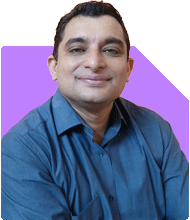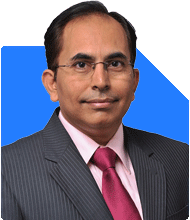Ramalingam Kalirajan |10902 Answers |Ask -Follow
Mutual Funds, Financial Planning Expert - Answered on Nov 25, 2024
He has an MBA in finance from the University of Madras and is a certified financial planner.
He is the director and chief financial planner at Holistic Investment, a Chennai-based firm that offers financial planning and wealth management advice.... more

I have retired at 55, funds available 1.7 cross, monthly expenses 1.5 lacs per month. 1.00 dr required after 5 years for daughters marriage. PLease advise additional corpus required.
Financial Observations
Monthly Expenses
Your current monthly expenses are Rs. 1.5 lakhs.
This translates to Rs. 18 lakhs annually.
Marriage Fund Requirement
Rs. 1 crore is required in five years.
Allocating a portion of the corpus now can ensure it grows to Rs. 1 crore.
Corpus Sustainability
The existing corpus of Rs. 1.7 crores is insufficient to sustain Rs. 1.5 lakhs monthly.
The gap between income and expenses will drain the corpus quickly.
Inflation Impact
Inflation will increase your expenses over the next 20–30 years.
Adequate planning is essential to preserve purchasing power.
Recommendations to Address the Corpus Gap
Marriage Fund Planning
Invest Rs. 70-75 lakhs in debt mutual funds or fixed-income instruments.
These options can grow steadily to Rs. 1 crore in five years.
Monthly Expense Management
Create a systematic withdrawal plan from the remaining corpus.
Focus on balanced or hybrid funds to sustain monthly cash flow.
Estimate Additional Corpus Required
Considering inflation and long-term expenses, an additional Rs. 4-5 crores is needed.
Start building this corpus through systematic investments.
Invest Additional Corpus for Growth
Invest new funds in equity-heavy portfolios for higher returns.
Diversify into large-cap, flexi-cap, and balanced funds.
Portfolio Allocation Strategy
Debt Allocation for Stability
Allocate 40–50% of the corpus to debt instruments.
Focus on short-term debt funds or fixed-income securities.
Equity Allocation for Growth
Invest 50–60% of the corpus in equity mutual funds.
Choose actively managed funds with consistent long-term performance.
Hybrid Funds for Balanced Growth
Allocate a portion to balanced advantage funds.
These provide stability and reduce volatility.
Emergency Fund
Maintain six months’ expenses in a liquid fund.
This ensures liquidity for emergencies.
ESOP or Stock Diversification
Avoid high concentration in single-company ESOPs.
Diversify into broader markets or mutual funds.
Tax Planning for Withdrawals
Minimise LTCG Tax on Mutual Funds
Long-term capital gains over Rs. 1.25 lakh are taxed at 12.5%.
Time withdrawals to reduce taxable gains.
STCG Tax Consideration
Short-term capital gains are taxed at 20%.
Avoid premature redemptions to save on taxes.
Debt Fund Taxation
Debt fund gains are taxed as per your income tax slab.
Plan redemptions strategically to reduce tax outgo.
Steps to Build the Additional Corpus
Increase Investment Allocation
Contribute Rs. 1.5–2 lakhs monthly to new investments.
Use systematic investment plans for disciplined investing.
Focus on Long-Term Equity Growth
Allocate a significant portion to equity for compounding growth.
Include international equity for diversification.
Review and Adjust Portfolio Regularly
Conduct half-yearly reviews to align with goals.
Rebalance the portfolio to manage risks.
Seek Professional Guidance
Work with a Certified Financial Planner to create a tailored plan.
Regular monitoring ensures you stay on track.
Final Insights
Your current corpus and monthly expenses require careful management. An additional Rs. 4-5 crores is necessary to ensure long-term financial stability. Focus on strategic investments and tax-efficient withdrawals. Plan proactively for the marriage fund and sustain your lifestyle comfortably.
Best Regards,
K. Ramalingam, MBA, CFP
Chief Financial Planner
www.holisticinvestment.in
https://www.youtube.com/@HolisticInvestment
You may like to see similar questions and answers below
Ramalingam Kalirajan |10902 Answers |Ask -Follow
Mutual Funds, Financial Planning Expert - Answered on May 12, 2024
Milind Vadjikar | Answer |Ask -Follow
Insurance, Stocks, MF, PF Expert - Answered on Nov 22, 2024
Ramalingam Kalirajan |10902 Answers |Ask -Follow
Mutual Funds, Financial Planning Expert - Answered on Dec 05, 2024
Ramalingam Kalirajan |10902 Answers |Ask -Follow
Mutual Funds, Financial Planning Expert - Answered on Feb 06, 2025
Ramalingam Kalirajan |10902 Answers |Ask -Follow
Mutual Funds, Financial Planning Expert - Answered on Jul 23, 2025
Anu Krishna |1749 Answers |Ask -Follow
Relationships Expert, Mind Coach - Answered on Dec 17, 2025
Anu Krishna |1749 Answers |Ask -Follow
Relationships Expert, Mind Coach - Answered on Dec 17, 2025
Radheshyam Zanwar |6748 Answers |Ask -Follow
MHT-CET, IIT-JEE, NEET-UG Expert - Answered on Dec 17, 2025
Anu Krishna |1749 Answers |Ask -Follow
Relationships Expert, Mind Coach - Answered on Dec 17, 2025
Dr Shakeeb Ahmed Khan |184 Answers |Ask -Follow
Physiotherapist - Answered on Dec 17, 2025
T S Khurana |538 Answers |Ask -Follow
Tax Expert - Answered on Dec 17, 2025
T S Khurana |538 Answers |Ask -Follow
Tax Expert - Answered on Dec 17, 2025
Janak Patel |72 Answers |Ask -Follow
MF, PF Expert - Answered on Dec 17, 2025
Ramalingam Kalirajan |10902 Answers |Ask -Follow
Mutual Funds, Financial Planning Expert - Answered on Dec 17, 2025
Samraat Jadhav |2511 Answers |Ask -Follow
Stock Market Expert - Answered on Dec 17, 2025

























